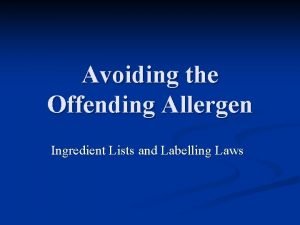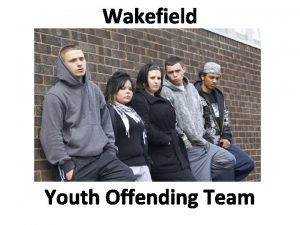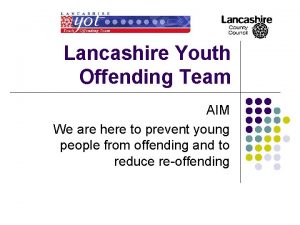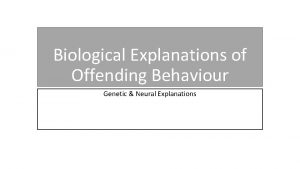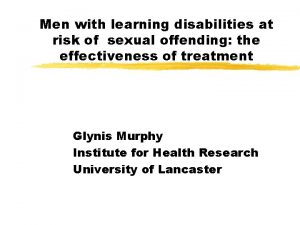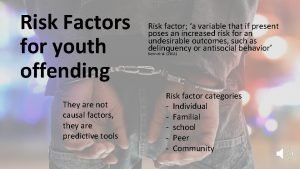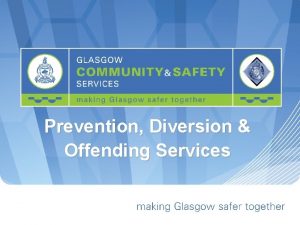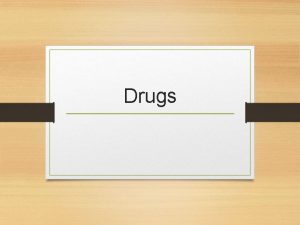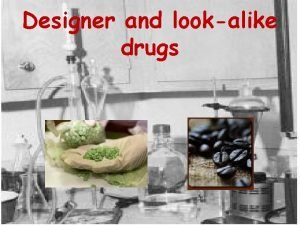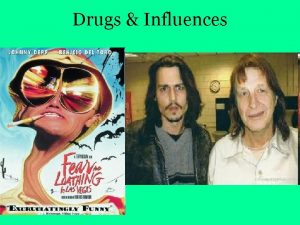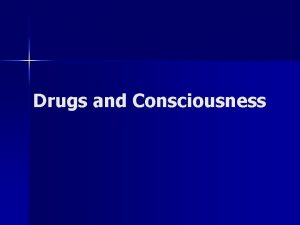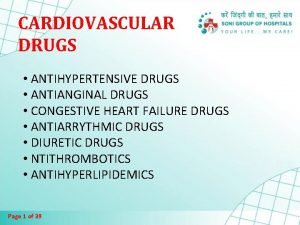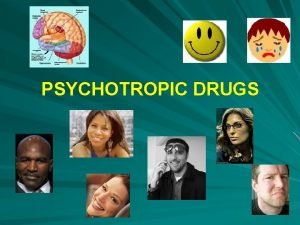Sex and Drugs Sex Offending Types of Sex
















- Slides: 16

Sex and Drugs

Sex Offending • Types of Sex Offender? – Not homogenous group • Why this matters – Causes of offending – Effectiveness of interventions

Sex Offender Assessment • Standard Corrections Assessments – Risk/Need – Limitations? • Sex-offender specific – Phallemetric • Marshall less structured interview (PCL)

Theories of Sex Offending • Is a general theory desirable/possible? – Rape – Child Molestation – Exposing/peeping, etc. • General Risk factors – Objectification/sexualization of women/children – Lack of prosocial role models – Lack of interpersonal skills

Empirically, what is known? • Social Skill deficits • Criminal thinking errors • Depression/anxiety (? )

Interventions • • • Pre-1960 s = psychodynamic 1960 s-1970 s = radical behavioral 1980 s = extend to social skills 1980 s/90 s = cognitive behavioral 1990 s-now = add relapse prevention

Meta-analysis of sex offending treatment • Overall mean effect of. 14 • Radical behavioral only = -. 14 • Cognitive behavioral and hormonal were best bets . 20 and beyond – Treatment effect larger with longer follow ups – Sex offenders may be at risk for 20+ years

Treating Substance Abuse in Offender Populations

Theory • Why is “theory” important? • Theory and Substance Abuse – Social learning theory – Biology/genetics – Low self-control – General Strain Theory – Self-esteem/other issues? • Is Substance Abuse a “Disease” or a “Behavioral Problem”

Assessment • How is “abuse” or “use” assessed in a correctional environment? – Dependence (physiological, psychological) – Abuse (extent to which it creates problems) • LSI – Law violations, marital/family problems, school/work, medical problems, other • Why is assessment important? • How are assessment scores used?

Models for Rx • Psychodynamic • Radical Behavioral – Aversion (Covert Sensitization) – Operant conditioning (tokens, contracting, etc. ) • Cognitive Behavioral – Cognitive restructuring – Cognitive skills • Therapeutic Communities • Family Therapies (“Intervention”)

Relapse Prevention • Another “skill” acquired via social learning – Identify all of the problems substance use causes – Identify high risk situations – Identify coping strategies for each situation • Succeeding in high risk situations builds self-efficacy • Be careful of “Abstinence Violation Effect” – Lapse snowballs into total loss

Self-Help/Support Groups • AA/NA, etc. – History – The “ 12 step model” • Spiritual, physical, mental disease • Admit a problem and acknowledge all the areas in your life you have affected, make amends, help others with disease… – Turn life over to “god” or similar being… – What does research tell us about these groups? – AA and the PEI • Points of agreement • Points of disagreement

Pharmalogical Approaches • Harm reduction models – Like the Green Bay Packers’ offense, “You cannot stop it, you can only hope to contain it. ” • Benefits of controlled use? – Methadone • Newest use is for methamphetamine users – Other examples • Needle exchanges • “Safe use” educational programs

Responsivity Issues • General responsivity • Specific responsivity – Race – Gender – “Readiness” • Stage of change idea • Unique causes/consequences of problems – Use for…. enjoyment, stress relief, – Problems = marital, employment…

Effectiveness • What counts as failure (recidivism)? • Meta-analysis results – Most successful were… • Cognitive/behavioral (skills, contracting, relapse prevention…) – Least successful were • EDUCATIONAL APPROACHS LIKE D. A. R. E. – Dare to say no to D. A. R. E.
 Sex sex sex
Sex sex sex Sex in the greenhouse
Sex in the greenhouse Xxtesticles
Xxtesticles Sex sex sex
Sex sex sex Secondary sexual characters
Secondary sexual characters Epq spec
Epq spec Avoid the offending allergen that
Avoid the offending allergen that Wakefield youth offending team
Wakefield youth offending team Psylotron
Psylotron Youth offending service
Youth offending service Neural explanations of offending behaviour
Neural explanations of offending behaviour Sotsec-id
Sotsec-id Vanguard plus
Vanguard plus Risk factors for youth offending
Risk factors for youth offending X linked punnett square
X linked punnett square Sex linkage
Sex linkage Sex determination and sex linkage
Sex determination and sex linkage






